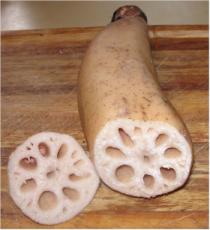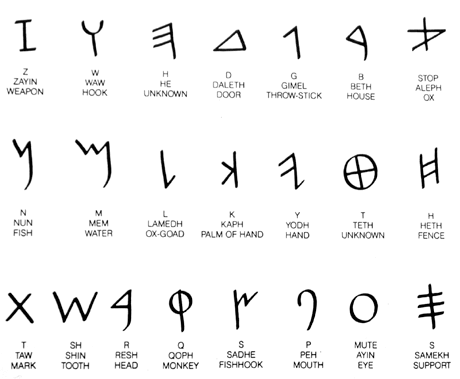
|
|

|
YOU ARE HERE:>>Mystery objects>>What is this? Section 4, page 3.
Didier would be pleased to know if anyone can identify these interesting little things.
I do not know whether this is a bead or an amulet. It is flat-backed, diameter: 2.2 cm, 7 mm thick.
.
Object B is very intriguing (Mickey mouse-like!). This is presumably a red jasper inlay (piece is flat backed) From the Amarna period? 2.3 cm high, 3 mm thick.

From Graham.
6th April
The red Micky Mouse one is somewhat Pazuzu-looking wouldn't you say? Of
course there is no reason why an Assyrian demon should emerge in Egypt but he
managed to turn Linda Blair's head 360 degrees in the USA, so who knows where he may have been in the past.
Graham refers to....

From Didier many years later.
As noted by Tim, this bead ressembles a stylized lotus flower/root section. The lotus was a symbol of the sun: at nightfall it closes and goes beneath the water and at dawn it climbs up above the water and reopens. A myth indicates that during creation time a giant lotus flower grew out of a pond and from it the sun rose.
Similar artefacts:

.
From Earl.
8th April.
Cant be a lotus root; the roots are round.
Here is a photo of two Egyptian glass items said to represent the lotus root. They are not pierced so my guess is they may have represented the real thing on an offering table.

.
From Nick.
8th April
The jasper one looks at first glance like a god bead (often depicted with a
staff) gone wrong. It it is also similar to a very rare 'side on' view of
Sekhmet/Bastet Aegis amulet but I'm quite confident that this is a venerating
baboon, the long protrusion are the arms worshipping the sun and there is a
lunar disc on the head, the material would make sense too, commonly associated
with Thoth. Possibly Amarna but definitely NK. Do I win a prize?
Tim is very likely correct with the lotus reference, these beads were once
attributed by Petrie to be modern copies of Udzat (eyes of Horus), I can't find
anywhere where he may have changed his mind? Found NK to TIP, they are sometimes found in large quantities back to back as a necklace in it's own right or used as terminals to 'tie off' strings in necklaces. Examples found in Late Period
burials are likely heirlooms placed on bracelets OR are actually LP representations of eyes of Horus (where I think Petrie may have become confused perhaps). I also suspect there is a link with these to those Roman multicoloured glass types??
From Anon
10th April '10
This is the very same blue object sold on E-bay a few weeks ago. The description does not make sense to me, and the seller does not know more (I sent him a message) but you never know!
However, I know for sure that this is not from the XIIth Dynasty. someone at the BM was thinking of a late (Graeco-Roman) object and he was probably right.
.
Mo asks what is this.
6th April '10
At the momentiI have left this statuette in the local museum for observation but from all accounts they havent been able to be much use on the matter.
I wll hopefully pick it back up this week and try your water method..I was given the picece about 20 years ago by an ex boyfriend from Italy, I've no idea where he obtained it..
Unfortunately i broke it which its whys its so badly stuck back together!!.
.
It looks rather like a Phoenician terracotta but I cannot say if it's genuinely ancient or not.
From Mo.
Thanks for your input on the statue, have been looking at Phoenician terracotta, it certainly does look quite similar, do you know where it would be possible to get it carbon dated?
It's not Carbon 14 dating you need, which is for organic matter, but thermoluminescence testing, which is for fired terracotta.
There are other simple things you can do to decide if a piece of pottery is possibly ancient or likely new: although they are not anywhere as scientifically validated as such as TL testing.
Have a look in ![]() this section:
this section:
The first thing you need to do is put about half a teaspoonfull of water on the terracotta.
Ancient terracotta usually, but not always, adsorbs the water very rapidly. No actual water will normally remain on the surface after even a few seconds. New terracotta adsorbs much more slowly and water wil usually remainon the surface foir some time.
Then smell the damp terracotta. New terracotta has next to no smell other than sometimes a vague clay smell. Ancient terracotta very often has a particular dank musty smell when wet.
Not definitive tests at all, but rough indicators.
From Mo.
7th April
Picked my statuette up today from the Manchester museum this is what Bryan Sitch - curator of archaeology- had to say, but by all account he isn't an expert on this period?
"this is a puzzle! the fact that it is rather crude need not imply that it is a forgery. It could be a downmarket product made by or for a member of the greek community in egypt..which would explain the mixture of classical style and apparent ankh sign. It is difficult to say..the technique of hydroxylation - dating ceramic objects offers some hope of solving this mystery but not in the immediate future i'm afraid..
Did the water text and it evaporated quickly but no smell, although I do have bad sense of smell!!
I didn't see the Ankh sign on it!
Can you send a few better pics?
The Phoenican Tanit sign is often formed in a similar way.


.
The water test: it's not so much that it evaporates but is quickly adsorbed into the pottery.
Leaving it perhaps looking a bit darker for a while but not actually wet.
The smell is pretty variable really. But more often than not one does smell an at least slightly musty odour with ancient pottery.
The very new  rehydroxylation dating method for ancient pottery which he mentioned is not available other than in research departments at the moment. He would know about it as it's from Manchester Unversity.
rehydroxylation dating method for ancient pottery which he mentioned is not available other than in research departments at the moment. He would know about it as it's from Manchester Unversity.
From Mo
More photos.
Aha!! Thought so.
.
In fact looks possible that there are some Phoenician letters above it.
Use these illustrations to see if any letters match.
The form of the letters changed a liltle over time but this will serve well for the moment.



Home | About This Site | Privacy Statement | Gallery | Testimonials | Guarantees
About Collectors' Resources pages | What's New
Search | Site Map | Contact Us
 More questions about more interesting thngs
More questions about more interesting thngs